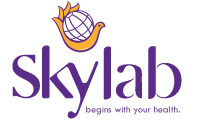No products in the cart.: ₹0.00
Using a patient-centered approach can lead to better results
Conclusions:
• In older patients, medication reconciliation errors are frequent.
• Maintaining a patient’s functionality can be aided by accurate medication reconciliation.
Medication reconciliation can be improved by forming multidisciplinary teams, maintaining thorough documentation, and collaborating with IT to develop suitable electronic health record capabilities.
At seventy-six, Claire Russo* lives alone at home. Her medical history includes uncontrolled type 2 diabetes, obesity with a BMI of 35, hyperlipidemia, depression, gastroesophageal reflux disease, hypertension, hypothyroidism, osteoporosis, vitamin D deficiency, and chronic discomfort. She also has an overactive bladder. Her leg damage from a fall 15 years ago resulted in an atypical gait. She has been using chronic pain pills and uses a cane ever since. Despite being a widow for five years, Ms. Russo is supported by her daughter, who resides nearby.
When Ms. Russo’s nurse practitioner (NP) arrives, she seems fine and shows no signs of immediate distress. Her single-family home is neat, and she is properly groomed and dressed. Ms. Russo keeps up a suitable conversation while being awake, aware, and focused. Though excited about the visit, she spends the first ten minutes gathering her sixteen prescriptions from different parts of the home.
The visit is for usual reasons, but there is also a concern over dysuria. Ms. Russo is adamant about receiving empiric antibiotic treatment because she previously experienced identical symptoms from a urinary tract infection (UTI).
In light of Ms. Russo’s intricate medication schedule, advanced age, several medical conditions, and polypharmacy, what factors ought the NP to take into account prior to recommending a novel medicine?
Recognizing a difficult problem
Let’s take a step back and go over some key terms and ideas about older persons’ medication reconciliation. Geriatric patients are people who are 65 years of age or older, according to the American Geriatrics Society (AGS). They buy 33% of prescription pharmaceuticals and make up 14% of the population. According to AGS projections, by 2040 this demographic will account for 25% of the population and 50% of prescription medication users.
Generally speaking, multimorbidity is the presence of two or more chronic illnesses. We are aware that multimorbidity rises with population age, and that this can lead to a rise in pharmaceutical intervention. Five or more medications are typically considered to be polypharmacy, however exact definitions vary. Homebound patients typically fit the requirements for both multimorbidity and polypharmacy, and they are typically elderly and chronically ill.
The most common risk factor for drug therapy issues is thought to be becoming older (that is, any medication-related adverse event or potential difficulty in reaching optimal patient outcomes). Problems with drug therapy include accidental overdoses, poor medicine administration, and nonadherence. Among the groups advocating for action to lessen drug therapy issues are The Joint Commission, The World Health Organization, and the Office of Disease Prevention and Health Promotion of the U.S. Department of Health & Human Services.
Reconciling medications might be difficult. In order to determine what the patient is truly taking (including over-the-counter, prescribed, and nutraceutical drugs), the healthcare provider must evaluate discharge documentation, office records, and pharmacy records. The objective is to reconcile any disparities, however the procedure isn’t simple and lacks a single, cohesive framework. Expectations and ambitions of the patient are variables to take into account.
Steps for medication reconciliation
94% of elderly patients had some kind of medication reconciliation disagreement, according to research done in 2016 by Rose and colleagues. Precise medication reconciliation not only yields a comprehensive inventory of a patient’s prescriptions but also ultimately protects the patient’s functionality. Medication reconciliation ought to be carried out following every change in care, at each yearly visit, and at every patient interaction.
The goal of many alternatives in the health system is to enhance patient outcomes and drug reconciliation. These include working with the information technology team to add appropriate electronic health record features, like pharmacy record autopopulation and prescription price transparency, and forming interdisciplinary teams with a pharmacist, occupational therapist, or physical therapist. They also involve maintaining thorough records to increase accuracy. However, enhancing drug adherence and reconciliation goes beyond systemic problems. It is within your power as a front-line healthcare provider to reduce issues related to drug therapy.
Particularly when it comes to medication reconciliation at home, there are no industry-wide clinical practice recommendations. I created stages that cover the medication reconciliation procedure in detail based on my own experience, advice from other practitioners, and evidence-based literature reviews. (See 14 steps for reconciling medications.)
14 stages for reconciling medications
These procedures for medication reconciliation offer a thorough way to gather information and assess the prescriptions the patient is (or may not be) taking accurately.
1. Request that the patient have all of their medications on hand for the scheduled session in order to save time.
2. Begin by determining the patient’s aims and viewpoints regarding their prescriptions.
3. Request that the patient present you with all of their prescriptions, including over-the-counter meds, as-needed pharmaceuticals, creams, inhalers, herbs, and vitamins.
4. Compile data from extra sources, including records from the patient’s pharmacy, assisted living facility, hospital discharge paperwork, and provider records.
5. Verify that every prescription bottle matches the drug listed in the provider record.
6. Keep an eye out for any high-risk medications, particularly those like opioids, hypoglycemics, and anticoagulants that are listed on the American Geriatrics Society Beers Criteria® list.
7. Check for drug interactions between drugs or between drugs and diseases, as well as medication duplication.
8. Find out if the patient is taking the medication as directed. If not, find out what obstacles they are facing.
9. Find out how they administer the medication to themselves (e.g., by filling a pill container for seven days, or by taking each dose straight from the bottle). Collaborate with the patient to identify a dispensing strategy that promotes adherence.
10. Examine how the patient uses their medications by finding out about the indications and side effects of each one.
11. Go over the advantages, disadvantages, and adverse effects of every drug.
12. Get rid of any extra prescriptions and talk about secure disposal methods.
13. Evaluate the patient’s desire to take the drug, the medication’s price, and the practicality of the regimen. Finally, come up with a strategy that will allow the patient to take their prescription as directed.
14. Evaluate the patient’s ability to walk and their dexterity to see if they require occupational or physical treatment.
Shattering obstacles
Complicated regimens that make adherence difficult, caregivers with outside occupations, cognitive impairment, and other factors can all be obstacles to medication management for elderly homebound patients. You must evaluate the patient’s cognitive abilities, communicate clearly, and take drug feasibility into account in order to overcome these obstacles.
Effective communication
A patient-centered communication strategy, the teach-back technique, speaking at the patient’s health literacy level, and attending to sensory deficiencies can all help with some drug adherence problems.
communication focused on the patient. One of the six dimensions of healthcare quality, according to the Agency for Healthcare Research and Quality (AHRQ), is patient-centered care. Talk intently with your patient and their caretakers during your next visit.
Open-ended inquiries, getting to know the patient’s viewpoint, expressing empathy for their emotions, and summarizing the discussion are all components of patient-centered interactions. Make eye contact, lean forward, and nod to demonstrate that you are paying attention to nonverbal cues. Give the patient and caregiver space to breathe and don’t disturb them.
Giving patients more choice over their treatment may make them feel more at ease and provide you with additional information about how they take their medications. For example, if patients don’t want to change their long-term opioid pain medication, address their concerns. Explain the risks and other options and describe how a slow-weaning procedure may produce a safer pain medication management plan.
Teach-back process. This well-established strategy helps ensuring patients understand what a healthcare professional has spoken with them. The AHRQ provides information that anyone can utilize (https://bit.ly/3v2YeBx). Use the teach-back procedure when you start, quit, alter, or evaluate drugs.
Tell patients that you’re going to explain the current, altered, new, or discontinued medicine. Don’t bombard them with fresh information, and confine it to no more than four crucial points. Start with the most crucial point, and use clear language. Ask patients to explain the information back to you in their own words to ensure they comprehend. If they miss any of the points, re-explain and make them tell you again until you’re confident they grasp.
Communicate at the patient’s health literacy level. The focus on health literacy has helped healthcare workers communicate with patients so that information is processed and understood. Clearly communicating at the patient’s literacy level helps them to make appropriate healthcare decisions. To assess general literacy, ask the patient to read their prescription bottles to you.
Consider implementing these strategies to improve a patient’s health literacy:
• Speak in simple language, and avoid medical jargon. For example, instead of saying “hypertension,” say “high blood pressure.”
• Use alternative methods of providing information, such as videos or pictures. During home visits, share resources on a mobile device.
• Provide easy-to-read patient education materials written in a large font at a third-grade reading level.
• Ask open-ended rather than yes or no questions. Sometimes a patient agrees without fully understanding what they’re being asked.
Address sensory deficits. Hearing and vision deficits are common among older adults. If a patient can’t hear the discussion about how and why they’re taking a medication, adherence may diminish. Take steps to help the patient get the medical care to address these deficits.
If a patient has a hearing impairment, make sure they have their hearing aids in place, reduce background noise (for example, turn off the television or close windows), and write out instructions. Speak clearly and slowly without shouting, and make good eye contact to show your interest; this also allows the patient to see your face and lips.
If a patient has poor eyesight, ensure adequate lighting, have a magnifying glass available, or request assistance from a family member.
Assess cognition
Patients with cognitive impairments may take their medication in error but insist they’re taking it correctly, or they may be in jeopardy of making medication errors with high-risk, but necessary, medications. In this situation, medication safety must be addressed with the patient’s family or caregiver.
Some patients with cognitive impairment may require a higher level of support for medication supervision, such as assisted living. However, giving up their autonomy can be a sensitive issue. If a patient is reluctant, consider conducting a mini-trial with different dispensing methods, such as morning and evening pill packages prepared by the pharmacy, an automated pill-dispensing device, 7-day pill containers, or technology-assisted reminders. This approach provides an objective assessment of the patient’s ability to safely and independently take medications. The conversation about alternative medication administration may take several visits to gain buy-in from the patient and their family. Think of the conversation as a process.
Consider feasibility
Assess whether the prescribed medication is feasible for patients. For example, if they need to take furosemide for heart failure but have incontinence and immobility, they may be unwilling to take the diuretic. The furosemide timing may need to be adjusted, or strict fluid restriction might be a better answer.
| Skylab Clinical Laboratory | Best Clinical Lab | Laboratory in Attukal | Laboratory in Sasthamangalam | Laboratory in Karamana | Laboratory in Chala | Laboratory in Attakulangara | Laboratory in East Fort | Laboratory in West Fort | Laboratory in Kaithamukku | Laboratory in Pallimukku | Laboratory in Pettah | Laboratory in Vachiyoor | Laboratory in Plamoodu | Laboratory in Vazhuthacad | Laboratory in Ambalamukku | Laboratory in Perurkada | Customer Friendly | Affordable Price | Convenience | Online appointment | Home Collection Available |


